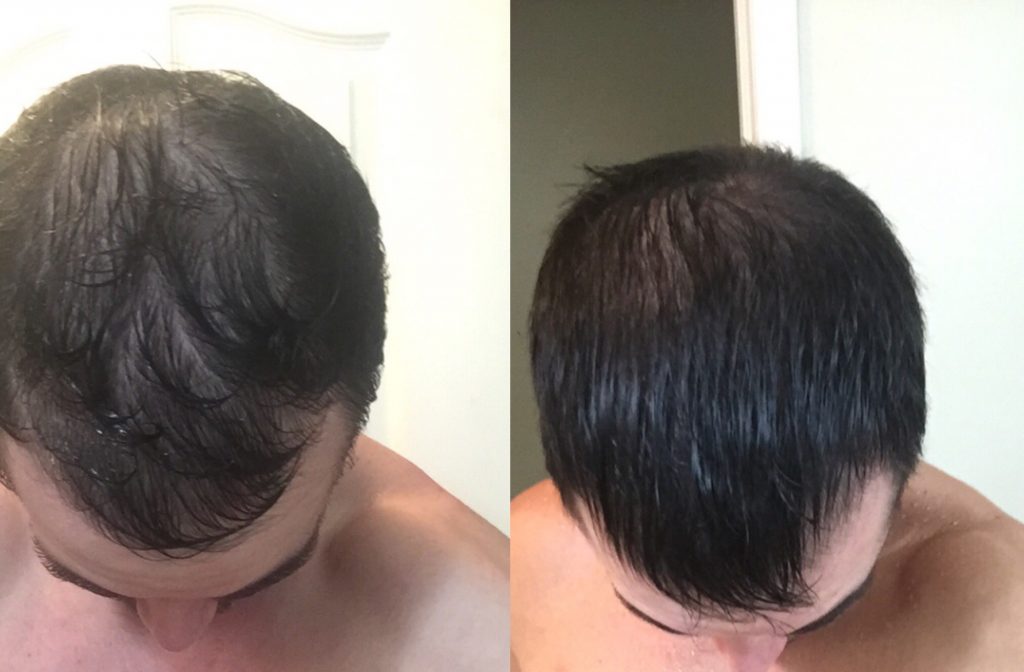
Hair loss is something that plagues both men and women. Most of us want to prevent aging and maintain our youthful appearance. Struggles with hair loss can often be even more damaging to self-esteem than weight gain.
Now there is a solution that is safe, effective, and natural, at a fraction of the cost of conventional hair replacement surgery. Minoxidil and Finasteride are the two major drugs that are used to slow down hair loss, but proponents of these drugs never ask the question: how do we help missing hair regrow?
PRP (Platelet Rich Plasma) is a regenerative injection therapy that has great results for men and women with fine, thinning, and receding hair lines. Numerous growth factors are released directly to the hair follicles, stimulating hair cycle growth and restoration!
This procedure takes only one hour, with no down time! A simple blood draw is taken and a numbing cream is applied to your scalp.
The PRP is applied with a micro-needling treatment, which activates the healing and repair response. You can expect this treatment to work over 6 to 12 months, and for best results, a minimum of at least 3 to 6 treatments is recommended, done every 4 to 6 weeks.
We can also look for any metabolic, hormonal, or nutritional causes of excessive hair loss and work to restore balance to the body.

Common causes for hair loss that we look for:
- Thyroid dysfunction
Thyroid hormones (produced in the thyroid gland) influence many metabolic processes including the cycle of the hair follicle. If your thyroid gland isn’t producing adequate thyroid hormone, hair loss is a frequent result. Restoration of proper thyroid hormone levels through nutritional modifications or hormone supplementation will often correct thinning hair (as well as a myriad of other symptoms). Hashimoto’s, the most common cause of hypothyroid, is an inflammatory autoimmune condition that often causes hair loss. For additional information on thyroid disorders, please read more here.
2. Hormonal Imbalance
Testosterone, and more specifically the testosterone metabolite, dihydrotestosterone (DHT), can become elevated and cause hair follicles to shrink in both men and women. Genetics can influence how much DHT a person produces, although there are also many diet and lifestyle choices that contribute. Many of the pharmaceuticals marketed for hair loss target this mechanism.
3. Low Protein Intake
Another common contributor to thin hair, especially in women, is inadequate protein intake. Whether it’s due to overall caloric restriction for weight loss, lack of protein rich foods (common with a vegan or vegetarian diet) or general poor nutrition (a diet high in sugars, poor quality fats, caffeine, and alcohol) analysis of daily protein intake can be a good place to start. Consider a goal of approximately 1 gram of protein for every pound of body weight, unless you have compromised kidney function or are lifting weights regularly.
4. Low Iron
The hair follicle actually requires ferritin (the storage form of iron) for growth. When iron levels are too low, caused by an iron deficient diet, malabsorption, or excessive blood loss (most common in menstruating women) the body will steal iron from less essential areas, such as hair, to provide for the production of red blood cells. Iron shouldn’t be supplemented unless necessary though, so the best place to start is with comprehensive blood work.
5. High Stress
High stress hormones can cause the hair follicles to synchronize in the resting phase, causing many hairs to fall out at once. This often occurs several months after a significant physical or emotional stress. In addition to the potential for identifying an underlying medical condition, there is a window of time during which the hair follicles are still treatable, however the longer a problem persists the more difficult it will be to reverse it, so when hair loss is identified, it’s important to take action! Even in cases where there is a strong family history, there are many things that can be done.
When hair follicles are damaged there is a window of time during which the they are still treatable; however, the longer you wait the harder it is to reverse! Once underlying causes of hair loss have been identified and addressed, the scalp can be treated with platelet rich plasma (PRP) injections to stimulate regeneration of the follicles and new hair growth.
PRP is a concentration of the patient’s own platelets. Platelets are specialized blood cells that contain large quantities of growth factors that promote healing and regeneration of tissue. The patient’s blood is collected and treated to activate and concentrate the platelets and growth factors and is then injected into the scalp, stimulating follicle growth. It is the patient’s OWN cells and growth factors, so there is no concern of an allergic reaction.

